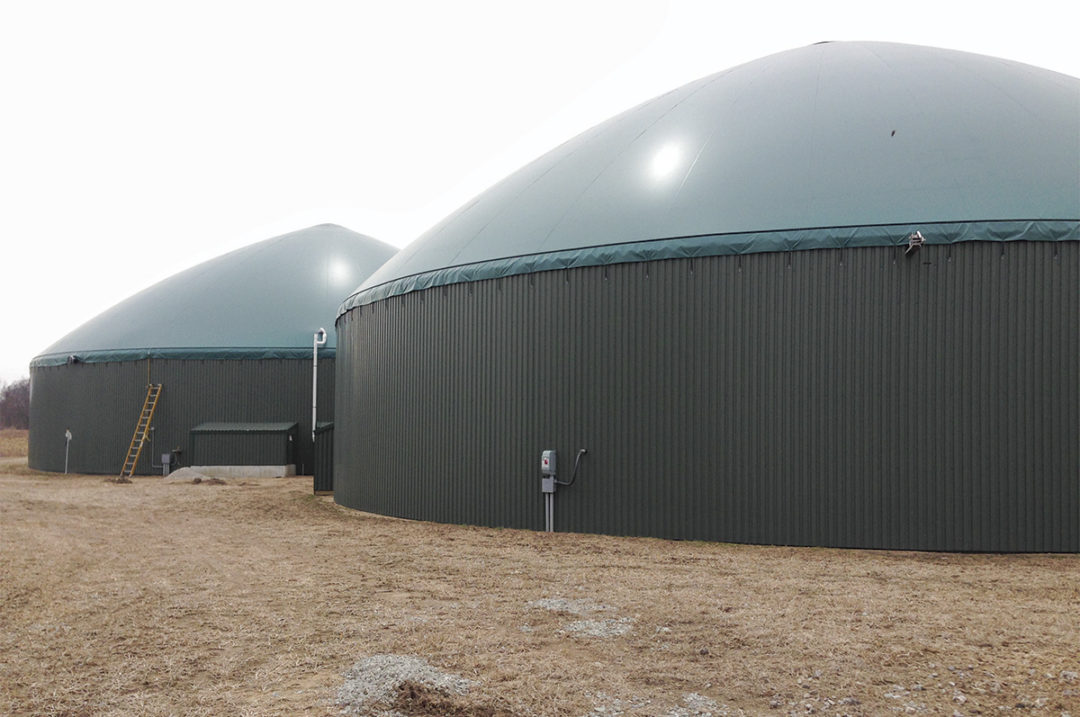Growth and transformation have been hallmarks of the biogas and renewable natural gas (RNG) industry in North America in recent years. New regulations, technology advancements and increased interest from a range of industries in carbon markets have fueled this evolution.
To discuss the landscape of carbon markets in a Canadian context – along with the regulatory frameworks, accounting methodologies and carbon credit revenue opportunities – the Canadian Biogas Association assembled a panel in October at Calgary’s Value of Biogas West Conference 2023.
Challenges with carbon accounting principles in voluntary markets
To introduce the market principles and set the scene for current carbon market opportunities, panelist Brad Pleima, president of EcoEngineers, commenced with an overview of the accounting methodologies used in these markets. Accounting methodologies are vital in assessing the environmental impact of biogas and renewable natural gas projects and in determining their revenue potential.
A variety of markets exist for carbon credits, with new markets emerging constantly. The markets may be compliance markets or nonregulated, voluntary markets like universities, utility companies, Fortune 500 companies and other large corporations looking to buy biomethane and RNG to decarbonize. New markets include Canada’s Clean Fuel Regulations (CFR), transforming RNG for hydrogen production, electricity production and the use of RNG in biomethanol production for export to Europe.
The rise of carbon markets has been marked by challenges due to the lack of standardization in accounting methodologies. Depending on the market or the buyer, different factors are emphasized to varying degrees when generating carbon credit quality and assigning a price to those credits. For example, where the feedstock may be a primary concern for one market, the ability to generate a Renewable Identification Number (RIN), or provide lifecycle analysis and carbon intensity (CI) scoring may take precedence in another.
In the compliance market, CFR, which was unveiled in 2022, has its own model for calculating CI. This contrasts with voluntary markets, which rely on a variety of models – resulting in a fragmented landscape subject to greater uncertainty.
Thus, standardization would benefit participants in nonregulated markets and enhance trust in the industry. As Pleima explained, the current lack of a unified approach leads to varying CI scores for the same project, depending on the specific methodology used.
To alleviate these issues, Pleima said, “It's important that all of these carbon accounting methodologies really follow basic carbon accounting principles: relevance, completeness, consistency, transparency, accuracy, conservativeness.” Using these principles provides carbon accounting with “backing so that everyone across the value chain – from the producer to the buyer to environmental justice to regulators – all understand the rules that we're playing by. Everything is done openly and in a science-based way,” he explained.
Furthermore, verification can add to the robustness of the accounting methodologies used. To encourage the uptake of this kind of standardization, panelist Sam Wright, manager of Canadian low-carbon fuel programs at Brightside Solutions, offered these insights: “As long as the end user can trace – through the verification of those environmental attributes – that there is confidence and confirmation of actual emissions reductions, then the value remains there for the customer. Rigorous verification is [a] solid way to contribute to that confidence.”
The private sector’s role in mitigating risk
Much of the driving force for more rigorous accounting methods and greater transparency in the carbon credit market comes from the private sector rather than governmental or regulatory bodies. As methodologies evolve to meet market demands, they are often subjected to critiques and criticisms about how carbon is measured, creating greater risk for the buyers. Therefore, reasoned Wyatt Catron, project development manager with 3Degrees and a presenting panelist, adoption of effective accounting methodologies has been championed by those looking to mitigate risk for buyers and make familiar the science behind them. “I see more push coming from the private sector,” said Catron. “If you look at the sheer volume of credits traded in the voluntary carbon market, it’s pretty eye-popping.”
CFR and its compliance categories
Navigating Canada’s CFR landscape is complex but full of opportunity. To demystify some of these regulatory complexities and provide a rough economic overview of revenue potential, panelist Jessica Cassidy, environmental consultant with GHD, used her time on the panel to walk attendees through the basics of CFR.
Firstly, there are three compliance categories to be aware of:
- Compliance category 1: Actions that reduce the carbon intensity of the fossil fuel throughout its life cycle
- This largely covers the activities of primary suppliers, including their emission reduction projects.
- Compliance category 2: Supplying low-carbon fuels
- This category encompasses the production and supply of biogas and RNG, along with the importation of low-carbon fuels into Canada and the production of biogas to electricity.
- Compliance category 3: Specified end-use fuel switching
- Typically, credit generation in this category comes from activities like utilizing RNG or compressed natural gas to fuel a vehicle.
- Cassidy noted the multiplier on carbon credits generated under this category is the most lucrative, highlighting the regulation’s intent to target transportation emissions.
With an understanding of the compliance categories, carbon market participants can begin to assess credits generated and estimate a dollar value for those carbon credits.
Using compliance category two as an example, those producing or importing biogas might see a range of financial benefits dependent on several factors, such as the energy density of the biogas and the market price of carbon credits.
Businesses have two options when quantifying the energy density of their biogas. They can either use the CFR's default energy density of 18.57 megajoules per cubic meter or measure their biogas energy density more precisely. The latter method tends to yield a higher return, which can translate to more significant financial gains. While the discussion used a conservative estimate of $150 per ton of carbon credits, the market often values credits much higher. Furthermore, the potential revenue for carbon credits nearly doubles with RNG because the energy density of RNG is roughly double that of biogas.
Finally, in compliance category three, the focus is primarily on the shift from generating gaseous credits to generating liquid credits, which occurs through activities like supplying RNG as fuel for transportation. As mentioned, this offers a multiplier effect on credit generation calculators, making it more attractive to businesses. When transitioning to this category, energy density increases, as does the reference carbon intensity. Carbon intensity scoring benefits from the multiplier, providing a strong incentive for businesses to explore this avenue.
Understanding carbon credits and opportunities in a dairy context
To better understand how some of these carbon market principles can serve the dairy sector, Progressive Dairy followed up with panelist Wyatt Catron to discuss these concepts within a dairy context.
Catron said there are a host of projects for dairy farmers to begin generating carbon credits and set themselves up for participation in carbon markets, including:
- Anaerobic digesters and biogas production equipment
- Clean fuel production from either RNG production or the production of electricity from that biogas
- This might look like using the electricity produced from on-farm biogas production to transition to electric vehicles and farm equipment.
- Alternative manure management programs (AMMP), which avoid the production of methane that would otherwise occur from an anaerobic process. Unlike a digester, methane is not recovered and used, but rather blocked from forming. Examples include:
- Livestock water recycling and flocculant separation
- Vermifiltration
- Compost pack bedding
- Restoration or creation of wetlands
- The conversion of manure to biochar, known as pyrolysis
- Hydrothermal carbonization (HTC) to produce hydrochar
Matching the right project to the operation is an important consideration, Catron said. There is no prescriptive approach, and farms do not stand to benefit much from projects that might compromise other areas of their farm business.
A good starting point is an investigation into the technologies available, considering those that provide their own benefits while also generating credits. “Going about it from that approach really drives a good experience with carbon markets for the farmers because it's taking their practices that they implement and determining if they're eligible for carbon credits rather than the prescriptive approach,” Catron explained. “There are very few carbon projects where just the carbon alone can fund the activity, so really thinking holistically and thinking about carbon credits as a piece of the project benefit is [a] helpful way to approach the situation.”
This tactic is also valuable to overcoming challenges raised by carbon market participation, such as the uncertainty of the market dynamics. Catron stressed the importance of approaching carbon markets with an understanding of the risk and uncertainty involved, as prices are subject to fluctuations much like other market-traded commodities. Although the programs are designed to be consistent and reliable, carbon credit pricing is not regulated.
However, there are ways dairy producers can insulate themselves against some of these monetary challenges, and starting early is one way to reap greater benefits from carbon markets. “The people who are most successful in the carbon markets are the people who get in early because they generate credits from the moment they get involved,” he advised.
While the compliance market, and CFR specifically, involve the generation of credits that petroleum companies must buy based on the volume of petroleum they produce, credit buyers in the voluntary market are more interested in collaborating with like-minded businesses whose initiatives align with their interests.
“There are Canadian companies now that are starting to consider their carbon emissions and are looking for options that are more local, that are more directly tied to their communities and that have more benefits beyond the carbon, like benefiting farmers, adding revenue streams to the farming industry and making safer, healthier farms,” Catron noted.
In dairy, a voluntary buyer of carbon credits might be a food or beverage processor who is chiefly concerned with credit quality. The quality of a carbon credit to buyers in the voluntary market depends on transparency, data collection and the project's broader impact. The more significant the socio-economic and environmental benefits, the more valuable the credits become. For dairy producers, this means not just reducing emissions but also contributing to healthier farms and communities.
In conclusion, carbon markets offer dairy producers a chance to contribute to sustainability efforts while benefiting financially. By approaching carbon markets with the right mindset and focusing on transparency, consistency, the project’s socio-economic impact and its fit within wider farm goals, dairy producers stand to gain a lot as small but mighty participants.










